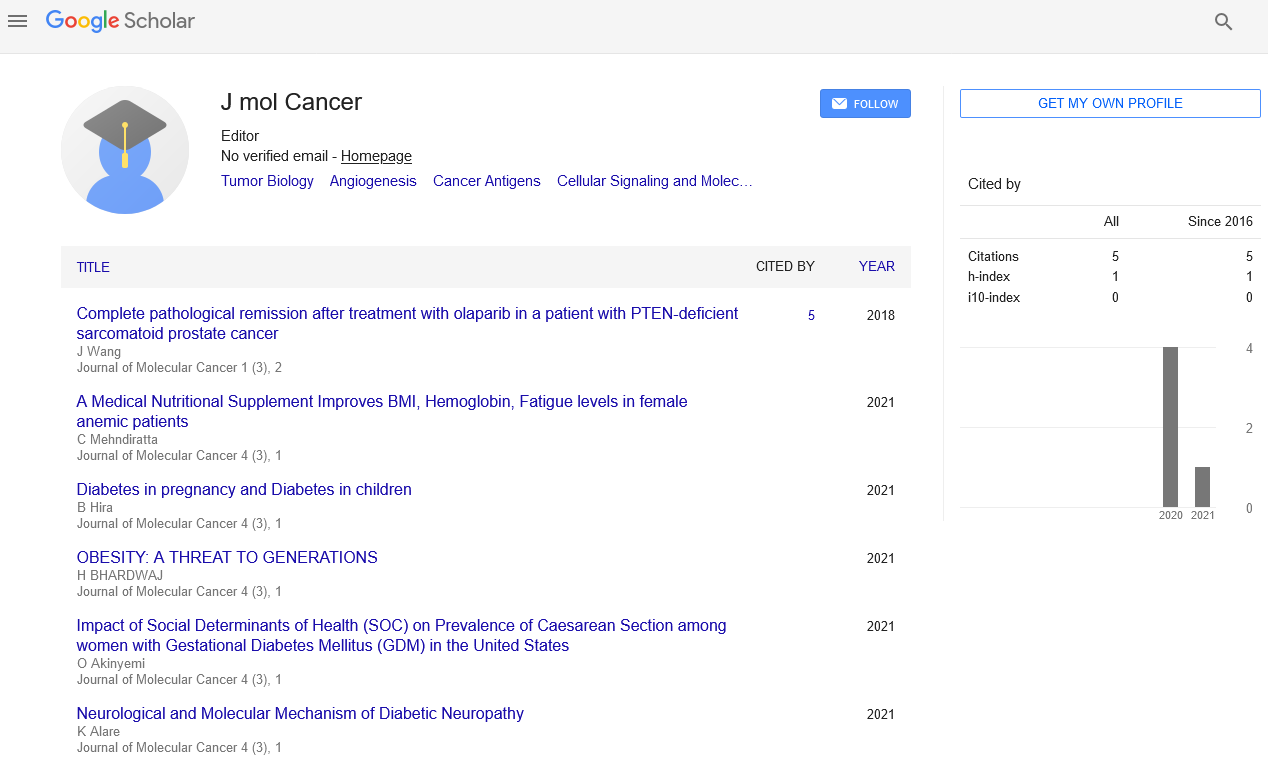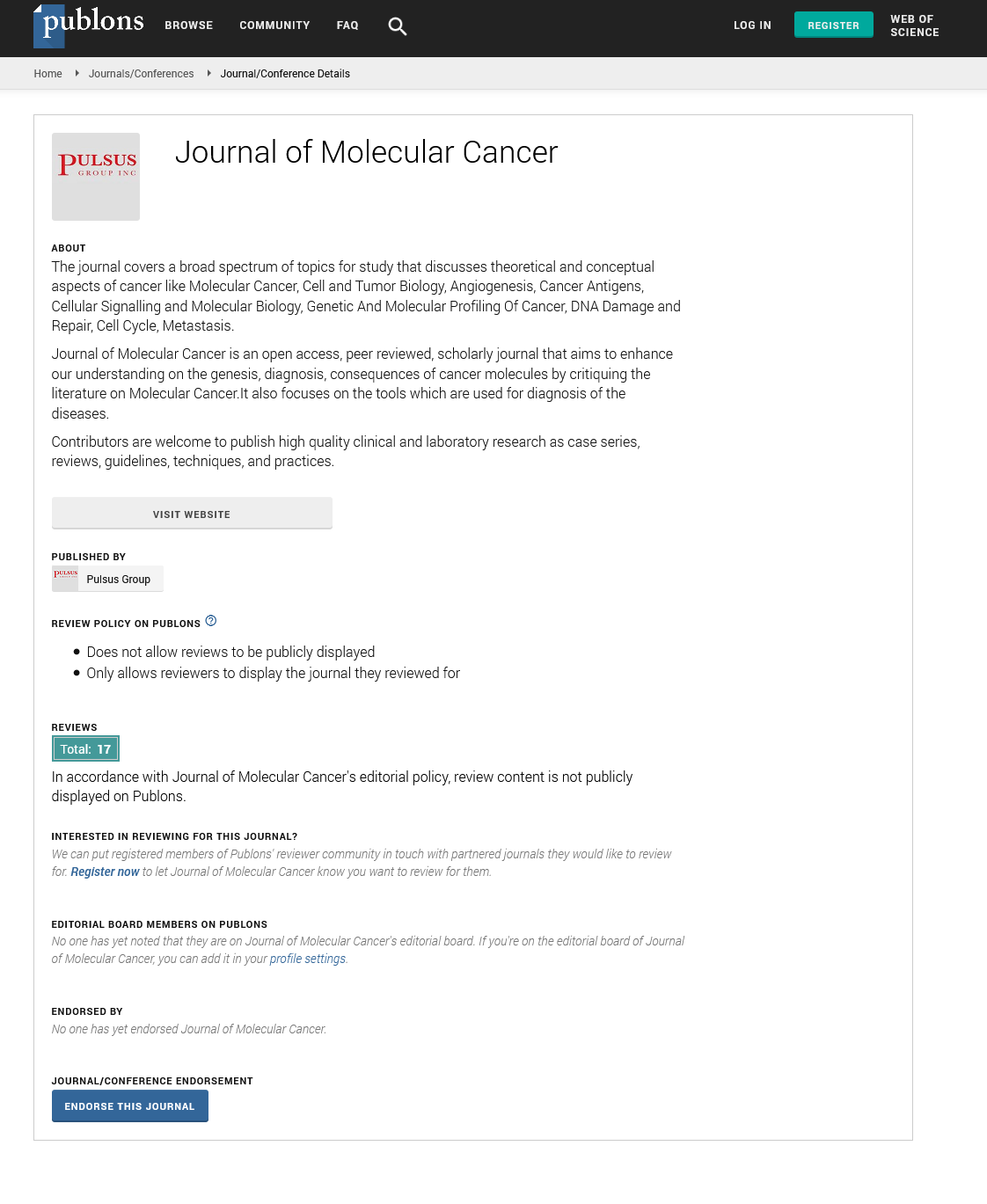Cancer organoid for effective anti-cancer drug research
Received: 08-Mar-2018 Accepted Date: Mar 30, 2018; Published: 12-Apr-2018
Citation: Yun S, Jin S. Cancer organoid for effective anti-cancer drug research. J Mol Cancer. 2018;1(1):9.
This open-access article is distributed under the terms of the Creative Commons Attribution Non-Commercial License (CC BY-NC) (http://creativecommons.org/licenses/by-nc/4.0/), which permits reuse, distribution and reproduction of the article, provided that the original work is properly cited and the reuse is restricted to noncommercial purposes. For commercial reuse, contact reprints@pulsus.com
Abstract
Cancer is an abnormal condition of cells that changes dynamically, consisting of various cells and extracellular components. However, research on anticancer drugs does not account for these abnormalities. Therefore, in order to kill cancer, researchers should imitate cancer
Keywords
Cancer organoid; Anti-cancer drugs; Tumor-microenvironment
An article in the Nanomaterials Journal addresses cancer organoids and is entitled, “Three-Dimensional Hepatocellular Carcinoma/Fibroblast Model on a Nanofibrous Membrane Mimics Tumor Cell Phenotypic Changes and Anticancer Drug Resistance” [1].
Cancer is a combination of tumor cells, other cells such as stromal cells and the extracellular matrix. These components interact in the 3-dimensional (3D) space of the cancer mass and form a complex microenvironment called the tumor-microenvironment (TME). However, most anticancer drugs have been studied within a 2-dimensional (2D) monolayer of cultured cancer cells. These traditional culture methods include only tumor cells, without other tumor-mass component cells and extracellular matrix components. Therefore, a valid candidate anticancer drug that shows effective cytotoxicity in cultured cancer cells is often ineffective in clinical trials. To date, the failure rate of anticancer drugs in clinical trials has been extremely high, approximately 96% [2]. To reduce this discrepancy is one of the top priorities in cancer research. As a way to minimize the gap between in vitro experiments and clinical trials, the authors mimicked the TME by reverse engineering the design of actual hepatocellular carcinomas. At first, the authors designed fibrous membranes that mimic the extracellular matrix of tumor masses [3]. Unlike other studies, the authors purposefully used a wide range of fibrous membrane thicknesses because of tumor mass irregularity. Next, the authors included fibroblasts to mimic the epithelial-to-mesenchymal transition (EMT), which is an essential factor in tumor progression, growth and metastasis [4-6]. Finally, tumor cancer cells were included to generate spheroid cultures. Numerous studies have demonstrated that 3D-cancer cell aggregates show stronger drug resistance than 2D-cancer cell culture methods [7].
This cancer organoid model behaves similarly to actual hepatocellular carcinomas, confirmed by various readouts such as albumin secretion, collagen secretion, morphological changes and anticancer drug resistance. The authors expect to reduce the failure rate of anticancer drug experiments through the use of this cancer organoid model. Nevertheless, there are some limitations to this model. Other cancer contributors such as the circulatory system or the immune system are not included. Both systems are extremely important in cancer pathogenesis, but they are out of range of the tumor mass and interact with the entire human body. Therefore, it is very difficult to implement at the organoid level. In addition, this model does not take into account the heterogeneity of cancer cells. Numerous experiments report that metastatic cancers acquire increased mutations compared to primary cancer. Finally, this model cannot completely mimic irregularity. It is possible to imitate a tumor completely if a pattern exists, but to imitate irregularities is very difficult. The authors should be able to increase the similarities to cancer masses through subsequent experiments.
In spite of these limitations, this article shows promising significance. If drug trial failure rates and the time between in vitro experiments and clinical trials are reduced, the therapeutic-effect evaluation of new anticancer drug candidates will become more rapid and accurate.
REFERENCES
- Le BD, Kang D, Yun S, et al. Three-dimensional hepatocellular carcinoma/fibroblast model on a nanofibrous membrane mimics tumor cell phenotypic changes and anticancer drug resistance. Nanomaterials (Basel). 2018;64:1-11.
- Bhattacharjee Y. Pharma firms push for sharing of cancer trial data. Science. 2012;338:29.
- Yu Y, Fu F, Shang L, et al. Bioinspired helical microfibers from microfluidics. Adv Mater. 2017;29:201605765.
- Hugo H, Ackland ML, Blick T, et al. Epithelial-mesenchymal and mesenchymal-epithelial transitions in carcinoma progression. J Cell Physiol 2007;213:374-83.
- Lu P, Weaver VM, Werb Z. The extracellular matrix: A dynamic niche in cancer progression. J Cell Biol 2012;196:395-406.
- Kalluri R, Zeisberg M. Fibroblasts in cancer. Nat Rev Cancer. 2006;6:392-401.
- Imamura Y, Mukohara T, Shimono Y. et al. Comparison of 2D- and 3D-culture models as drug-testing platforms in breast cancer. Oncol Rep. 2015;33:1837-43.






